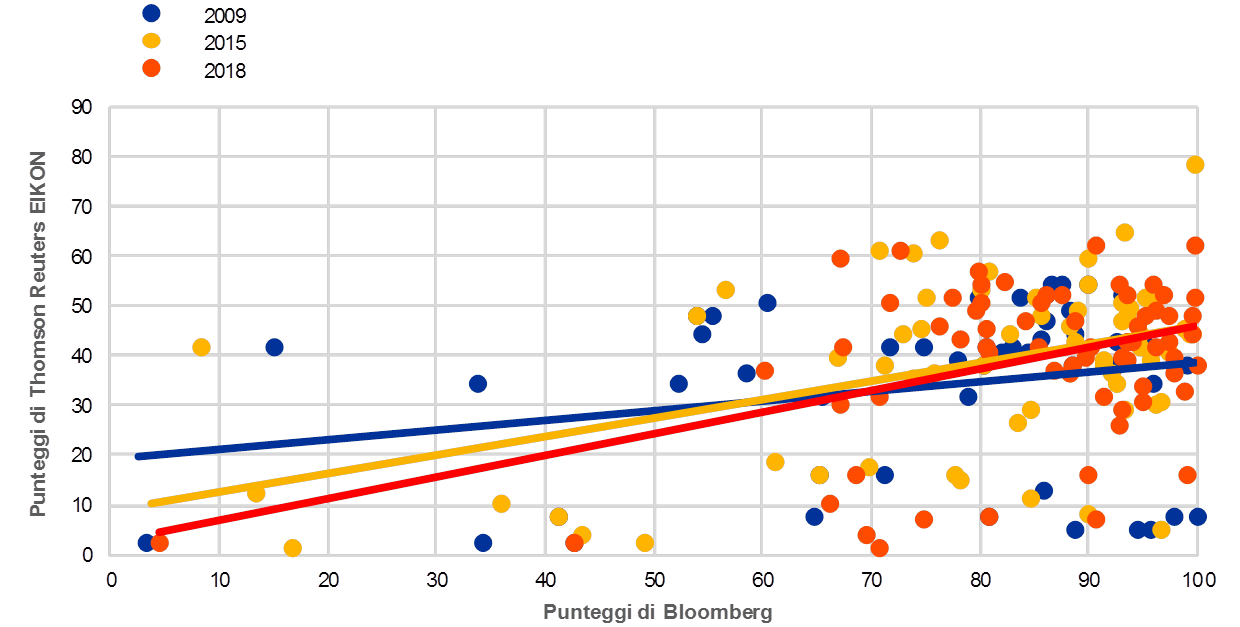
Digitalisation disrupts traditional banking? – Speech by Pentti Hakkarainen, Member of the Supervisory Board of the ECB, at the 5th Afore Conference
This will involve a lot of change and require new risks to be managed. But this upcoming period of transformation is not something we should be afraid of or seek to stop. Even if we wanted to get in the way of such progress, it would not be at all easy. When Luddites sought to stop mechanical looms being adopted for the production of textiles in the early 19th century, they discovered that new technologies offering added value had an inevitable momentum of their own.
Supervisors and regulators must also keep this in mind when scoping out their role during the forthcoming period of transformation within the banking industry. The challenge will be to ensure that financial stability, prudential soundness and consumer protection are preserved while allowing for beneficial technological innovation to succeed.
Beneficial technological change
Let me begin by giving my views on how the banking industry will evolve in the coming years.
Traditionally, banks have been one-stop-shops for their clients. By selling a range of products to their customers, banks have made the best use of the data advantages they had, increasing their revenues and profits in the process. For customers, it was inconvenient to shop around many different banks to get the best available price. Loyalty was therefore very high, as customers relied overwhelmingly on their relationship with a single bank, normally the one where they held their current account. However, these strong relationships may have come with unnecessary additional costs for customers. The variety of products on offer was limited and the pricing of services was not very keen. Even though surveys showed that customers were often not very satisfied at their “own” bank, the durability of that bank-customer relationship generally outlasted the average marriage in Western countries.
The stickiness of these bank-customer relationships will gradually diminish. Solutions will be found to empower customers to buy the services they need in an unbundled manner, offering the best terms in the most convenient way and on an increasingly global scale.
Driving this trend is customers’ increasing demand for convenient access to the services they need via easy-to-use digital applications. This convenience factor is becoming increasingly crucial across all service industries in the economy, and banking is no exception. This trend is also being reinforced by the increased availability of data, and the advances in the usability of this data thanks to the technological progress being made and enhanced computing power.
Technology platforms are helping customers get what they need. They are well placed to offer attractive and convenient interfaces for customers to pick and choose the services they require from whoever is offering the best deal.
As a result of their growing familiarity with technology, digitally savvy customers are increasingly asking firms to provide them with convenient digital interfaces. People want to be able to manage their payments and investments by making a few simple clicks on their smartphones when, for example, they are on their way to the office, or on the beach on holiday. These customers are relatively indifferent as to whether or not this interface is provided by a traditional bank or by a tech company. As long as there is sufficient trust in the reliability and stability of the services on offer, customers will move around flexibly to wherever they are best served.
The role of incumbent banks in this new setup will change, but if they are efficient, they can still play a central role in the future. At the front end of the business, banks may cede substantial ground to technology companies if these newcomers prove that they are better at offering attractive client interfaces.
However, incumbent banks are still trusted by a significant portion of their customers thanks to their reliable personal data gatekeeping record. This bedrock of trust gives them an advantage over technology platforms, which they can leverage to remain relevant in the future.
Furthermore, banks’ back office functions will continue to provide the crucial “plumbing” that underpins the financial system. Their experience and expertise will still be required to provide the high-quality, safe and competitively priced products and services that customers need.
What stage is the technological transformation process currently at in the banking sector? A lot of change has already taken place, and even more is occurring as we speak.
As part of their back office plumbing role, banks have been under intense pressure for decades to use modern IT systems to help maintain their price competitiveness and build resilience into these systems to ensure they are not susceptible to operational risks. Against this background, they have invested billions in state-of-the-art technology.
In addition to enhancing their own in-house IT systems, incumbent banks are partnering with technology companies to make further back office improvements. It is increasingly common for banks to use cloud services provided by big tech firms. This practice brings with it some risks that banks must stay on top of. I will come back to this point later. Focusing on the benefits, however, this practice offers banks a way of simplifying their existing complex IT systems and of achieving savings. It is also a useful way of allowing service volumes to be scaled up or down quickly depending on fluctuations in demand.
Incumbent banks are also beginning to offer their services through partnerships with the providers of advanced front-end technologies, such as technology companies. For example, when a tech company offers credit card or current account services, all the bank-related plumbing is provided by traditional institutions.
In Asia, big tech companies such as Alibaba and Tencent have been very successful in marketing their own financial services products to their huge existing network of users. They have their own banking licences and have gained high market penetration across a wide range of financial services, particularly payments, many fields of retail banking and in lending to small and medium-sized enterprises. Other big tech companies, such as Google, Amazon and Apple, have also started to make strides in these areas, including in the United States, the United Kingdom and Europe.[1]
Taken together, these developments are transforming and renewing the banking industry. We are moving towards an unbundled approach in which the constituent parts of the traditional banking model are being decoupled from single providers. Convenient apps can then re-bundle these services for customers where desired.
I am optimistic that these developments can drive improvements in how the industry meets customers’ needs. Competitive forces will increase: when services from different providers become easily comparable, the incentives for those providers to offer better services will intensify. This kind of competition will not stay within national borders since big tech firms can partner with banks from different countries. Competition will therefore become more global.
Relevant risks arising from the transformation of banking
As a bank supervisor, I am paid to worry. I therefore feel duty-bound to highlight some risks that may arise as a result of these changes to the industry. There are three elements here that each deserve attention: concentration, regulatory accountability and data protection.
Concentration could become an issue from two angles: in the market for the provision of third-party services to banks, and also potentially through a reduction in the overall number of providers of banking services
Third-party service providers are already showing some signs of a build-up in concentration risk. Banks tend to rely very heavily on the services of relatively few providers for their technology-related outsourcing. This is true in the area of cloud services, for example. Such heavy reliance on a few players across the market could contribute to systemic risk. An operational failure or a cyberattack at a single provider could interfere with numerous banks’ ability to provide services to their customers.
In the not-too-distant future, big tech companies – or other firms with vast existing client bases – could leverage their customer networks to swiftly gain large and direct market shares in banking services. Such huge and well-resourced firms entering the market could bring about concentration risks and put a substantial amount of pressure on the viability of incumbent banks with traditional business models. If some of these traditional banks are no longer capable of providing customers with added value, they will become obsolete and will have to exit the market. This could result in market friction if it occurs too suddenly or if too many exit at the same time.
Ensuring the regulatory accountability of big tech firms and other new banking sector entrants is not entirely straightforward. Their innovative approach to providing services may not be a neat fit for the traditional entity-based regulatory frameworks that we still rely on within the financial sector. If not handled carefully, this could become a back door for regulatory arbitrage, allowing similar activities to be carried out under differing degrees of scrutiny.
Another concern is data protection and the risk of data misuse. This is especially relevant in the context of big tech’s data-driven business models. Through the cross-sectoral data available via their non-banking activities, these firms are able to collect information that goes far beyond what is available to traditional banks.
Some researchers[2] say that the wide reach tech platforms have as a result of their access to data makes them digital monopolies or data-opolies. This could create potential opportunities for these firms to influence user behaviour in anti-competitive ways, possibly without the users themselves even being aware of it.
For example, big tech firms could abuse their market position to excessively promote their own products, or by making it too costly for banks to access their platforms to sell their products.
An anti-Luddite approach to risk management
How can we as supervisors and regulators best contribute to managing these risks?
When I think about this question, I think back to the concept of Luddism. Those who subscribe to this school of thought might advise us to simply prohibit the type of major technological developments I have been discussing here. This would protect incumbent firms and their employees, and we wouldn’t need to worry about these new risks.
However, even if we wanted to stop the clock, this wouldn’t work. We should remember that when the Luddites sought to stop machines being introduced in the textile industry, they didn’t have a great deal of success!
Instead, history suggests that we will benefit if we have some courage in embracing change, even if this means learning to manage some new risks along the way.
Electricity can occasionally cause electric shocks, but we didn’t use this as a reason to simply stick with candles. Internal combustion engines occasionally explode, but we nonetheless decided they were a better option than riding everywhere on horseback. Similarly, when the internet gave birth to cybercrime, we didn’t just turn off all our devices.
Instead, we found solutions. We invented and sold security programmes. We introduced firewalls. And most of us learned to be wary of emails requesting our bank details so that huge lottery wins could be transferred to us.
This solution-oriented approach is what we are aiming for in European banking supervision. Where new advanced technologies can be of benefit to customers and citizens, their adoption should be allowed. As this dynamic process of technological improvement occurs, we supervisors and our regulatory colleagues are here to oversee the process to ensure that prudential soundness is maintained.
Let me finish by providing you with some examples of what this means in practice, referring back to the risks mentioned in the last section.
As regards concentration and the use of third-party service providers, we are not here to instruct banks on what is and is not commercial from their perspective. This is for market participants to decide based on their expertise.
However, in line with the European Banking Authority’s Guidelines on outsourcing arrangements, European banking supervision seeks to ensure that banks remain responsible for and in control of all risks arising from their activities. IT outsourcing must not lead to a situation where a bank becomes an “empty shell” lacking the substance to remain authorised. On the other hand, the use of these outsourcing contracts to simplify and modernise IT systems is to be encouraged.
With respect to regulatory accountability, a dynamic approach is needed to underpin prudential soundness and fairness during times of technological change. It is important that the regulatory framework continually abides by the “same services, same risks, same rules and same supervision” principle. Introducing more technology into the delivery of financial services cannot be allowed to become a back door to deregulation. This means we should increasingly focus regulation on the risks arising from activities rather than on the kind of entities performing them.
Consequently, if and when value chains are unbundled across multiple players, it must remain clear who is accountable for which risk and which activity. To ensure this happens, we must remain vigilant and be prepared to consider adjusting the EU’s regulatory scope if technology firms begin offering bank-like services. The risks associated with banking services must be adequately and consistently regulated regardless of the type of firm offering those services.
This principle of retaining a level playing field should also be applied to the regulatory approach to data. Specifically, the “open banking” idea of opening up bank customers’ data to facilitate competition should be applied to all market participants. The mobility of data in this context must not be a simple one-way street whereby technology companies prey on the data held by banks. Systems should be reciprocal, allowing banks to take advantage of the data held by any technology firm providing competing financial services.
Recent proposals from the European Commission that impose stronger obligations for very large online platforms seem reasonable. Hoarding client data and using it to gain an advantage over competitors will be classified as unfair practice.
However, the EU’s initiatives will not be enough because the activities conducted by large online platforms go beyond Europe’s borders. A global perspective is therefore needed to safeguard the interests of individuals and firms.
Conclusion
Let me conclude by re-emphasising that taking a Luddite approach to technological change is not really an option. We cannot turn back the clock.
Customers demand convenience and digital user-friendliness for all the services they use. To meet this challenge, many banks have already been very active and enthusiastic in adopting new technologies.
Technological progress and the prospect of new technologically sophisticated firms entering the market puts further competitive pressure on banks. This should help to focus minds on how to innovate in providing customers with the services they need.
Digitalisation is driving big changes across all sectors of the economy. Now is the time to embrace change and turn this into an opportunity to improve the banking industry.








